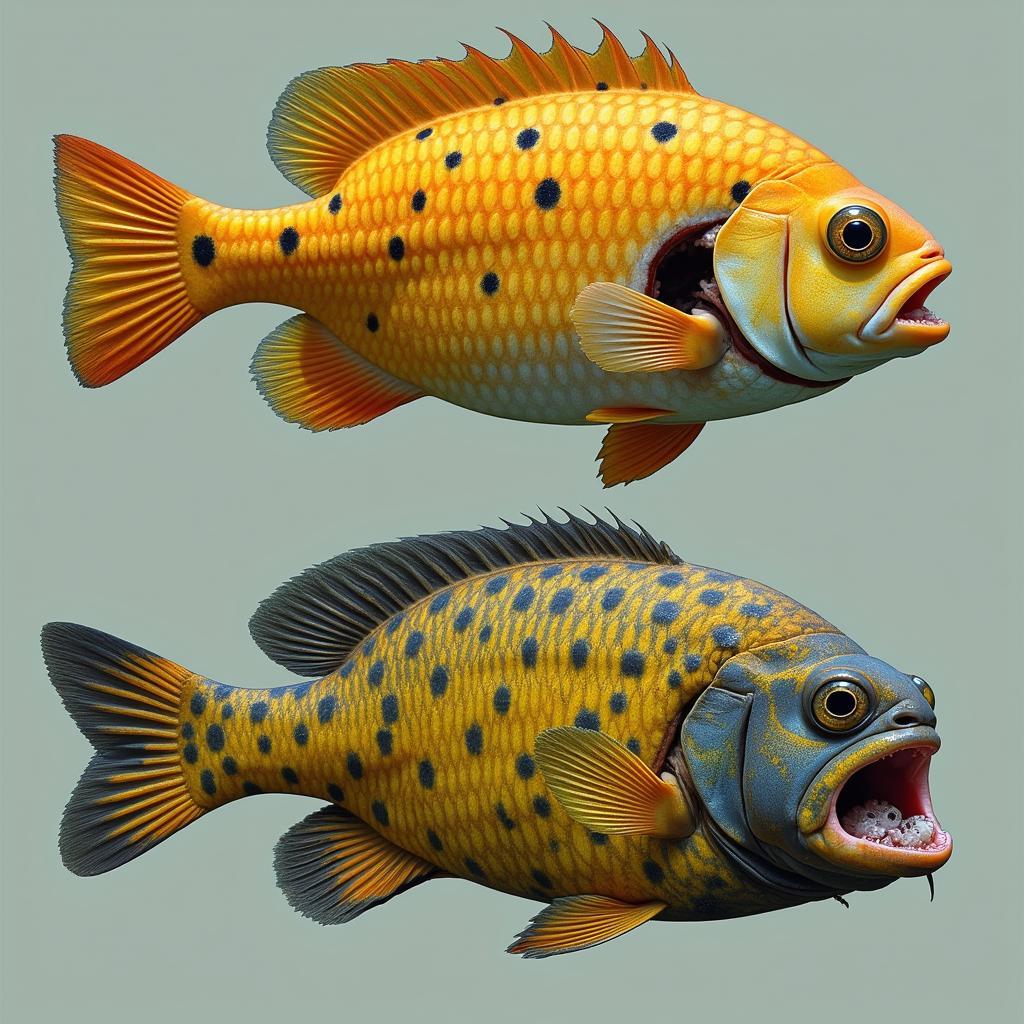African Cichlid Breeding Behavior: A Comprehensive Guide
African Cichlid Breeding Behavior is a fascinating and complex subject, varying significantly across the numerous species inhabiting the Great Rift Valley lakes of Africa. These vibrant fish exhibit a wide range of reproductive strategies, from elaborate courtship rituals to unique brooding methods. Understanding these behaviors is crucial for successful cichlid breeding in the home aquarium.
More than 2,000 species of cichlids call Africa home, and their breeding behaviors are as diverse as their appearances. Some species are monogamous, forming lifelong pair bonds, while others are polygamous, with males mating with multiple females. Factors influencing these behaviors include water chemistry, temperature, and the availability of food and suitable breeding sites.
Unraveling the Mysteries of African Cichlid Breeding
Cichlid breeding begins with courtship, a process that can be quite elaborate. Males often display vibrant colors and perform intricate dances to attract females. These displays not only advertise the male’s fitness but also help to synchronize the pair’s reproductive readiness. Once a female is receptive, the pair will select a breeding site. This could be a rock crevice, a sandy pit, or even an empty snail shell, depending on the species.
For many mouthbrooding species, the female lays her eggs and immediately takes them into her mouth. The male then displays egg spots on his anal fin, which the female mistakes for her own eggs. As she tries to pick them up, the male releases sperm, fertilizing the eggs in her mouth. This intricate process ensures the safety of the developing embryos.
 African Cichlid Mouthbrooding Behavior
African Cichlid Mouthbrooding Behavior
Other cichlid species are substrate spawners, laying their eggs on a chosen surface. Both parents may guard the eggs and fry, fiercely defending their territory from intruders. Parental care is a significant aspect of cichlid breeding behavior, with some species exhibiting remarkable dedication to their offspring.
African butterfly cichlid care provides insight into the specific requirements of one popular species.
Creating the Ideal Breeding Environment
Replicating the natural environment is key to stimulating african cichlid breeding behavior in captivity. Maintaining appropriate water parameters, including pH and temperature, is crucial. Providing a varied diet rich in protein will ensure the fish are in optimal breeding condition. Offering suitable breeding sites, such as rocks, caves, or even flowerpots, can encourage spawning.
Understanding the specific requirements of your chosen cichlid species is essential for successful breeding. For example, some species prefer hard, alkaline water, while others thrive in softer, slightly acidic conditions. Researching the natural habitat and breeding habits of your cichlids is the first step towards creating a successful breeding program.
African cichlids breeding information offers valuable insights into various aspects of cichlid breeding.
Recognizing Breeding Behavior
Knowing the signs of breeding behavior can help you anticipate and prepare for the arrival of fry. Changes in coloration, increased aggression, and the establishment of territories are all indicators that breeding is imminent. Mouthbrooding females will exhibit a noticeably swollen buccal cavity. Substrate spawners will diligently guard their chosen spawning site.
“Understanding the nuances of each species’ breeding behavior is crucial for success,” says Dr. Amani Jabari, a renowned ichthyologist specializing in African cichlids. “Providing the right environment and recognizing the subtle cues can significantly increase your chances of witnessing the fascinating process of cichlid reproduction.”
African cichlid venustus offers details on a specific species and its unique characteristics.
Raising Cichlid Fry
Once the eggs hatch, the challenges of raising the fry begin. Mouthbrooding females will release their fry after a few weeks, while substrate spawners will continue to guard their young. Providing a suitable diet for the fry is critical. Newly hatched cichlids require tiny, live foods, such as baby brine shrimp or infusoria.
“Providing a varied and nutritious diet is crucial for the healthy development of cichlid fry,” adds Dr. Jabari. “Ensuring a constant supply of appropriate food will maximize their growth and survival rates.”
African dwarf cichlids species provides more information on smaller cichlid species suitable for smaller aquariums.
In conclusion, african cichlid breeding behavior is a diverse and captivating subject. By understanding the specific needs and behaviors of your chosen species, you can create a thriving breeding environment in your home aquarium and witness the remarkable reproductive strategies of these fascinating fish. Remember, careful observation and attention to detail are key to successful cichlid breeding. African cat fish breeding video may also be of interest to those interested in other African fish species.
FAQ
- How often do African cichlids breed?
- What is mouthbrooding?
- How do I know if my cichlids are ready to breed?
- What do I feed cichlid fry?
- How do I set up a breeding tank for African cichlids?
- What are egg spots and what is their purpose?
- How long do cichlid fry stay with their parents?
Need Help?
When you need assistance, please contact us by Phone: +255768904061, Email: kaka.mag@gmail.com or visit us at: Mbarali DC Mawindi, Kangaga, Tanzania. We have a 24/7 customer service team.

